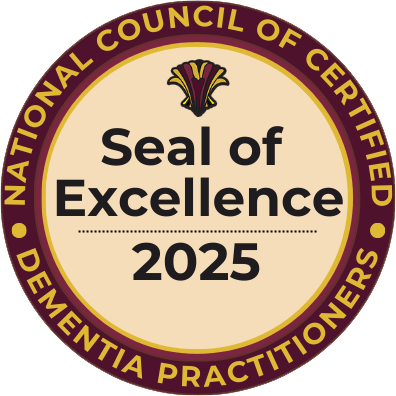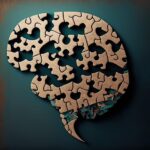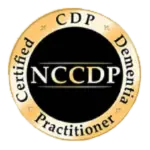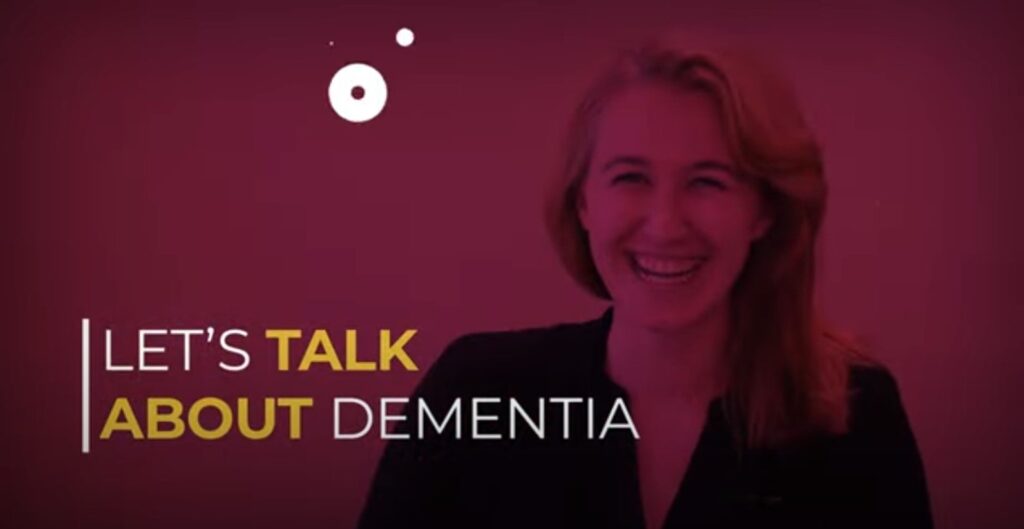Transcript:
Hello, Everyone! I’m Lynn Biot Gordon, the co-founder of the National and International Council of Certified Dementia Practitioners and welcome back to another session of Let’s Talk About Dementia. Today, we’re going to talk about Lewy Body Dementia. Specifically, Lewy Body Dementia is a neurocognitive disorder that affects the brain and most of the presentations we see will affect movement, behavior, mood, and thinking.
There are two types of Lewy Body Dementia, but we will get to that in a couple of minutes. First of all, how did we get the name Lewy Body Dementia? It refers to exactly what’s happening in the brain. There is an overgrowth of a protein called alpha synuclein and the overgrowth of that creates clumps and those clumps are called Lewy Bodies, named by Dr Lewy of course, who discovered this first on the brain, some years ago. Lewy Body Dementia typically starts when someone’s younger, in their 50s, but that doesn’t necessarily make it the case for everyone. However, what we will see though is some basic changes on the brain, as I had mentioned, before the clumps of overgrowth of protein that are called Lewy Bodies starts to create damages of neurons in the brain as well as some important vital brain chemicals start to become diminished such as acetylcholine. That we would call that kind of like a uh chemical bridge between neurons to send messages throughout the brain. So when these damages begin this is the symptomology you might start to see or the expressions you might start to see in your client or your loved one.
Trouble with maintaining attention, trouble with planning and organizing, sometimes having problem solving issues as well as multitasking, sort of losing their ability to multitask. So now you’ll start to see them focus and say listen I just need to do one thing at a time or focus on one thing at a time, no more multitasking. You might start to also see visual and spatial ability start to diminish. So they might not be able to really tell the distance between them and standing near a counter. So when they bend over they might bump their head on the counter because they are not able to really see that perception anymore or that depth perception anymore. You might also start to see unpredictable changes in their concentration and attention and their wakefulness and alertness. Also, you might start to see, unfortunately, visual hallucinations where they think that they’re seeing something that is not there or seeing someone that is not there uh and that’s something that can be very disconcerting um especially when you’re in a situation at work or out with friends and family and this person starts to think that they see someone or something that’s not there. Also, what we might start to see is movement changes, tremors sometimes, or sometimes muscle stiffness. So stiff movements maybe not bending their knees or bending their arms the way that they usually do and instead walking with an odd stiffness. Sleep disorders start to appear at this time as well so you might see early awakenings or um not sleeping at all. Maybe having some insomnia during the night time as well as reporting or complaining of being restless or having even restless leg syndrome is another one that we see frequently as well um with Lewy Body Dementia. Also, emotionally you might start to see presentations of um depression um lack of interest in activities that they normally used to pursue. You might start to see anxiety, maybe sometimes ideas not based in reality or maybe sometimes having inability to really reason basic situations anymore or be able to just reason the way through certain situations. You might also start to see a sensitivity to extremes like a sensitivity to heat and sensitivity to cold. You might start to see a poor sense of smell, they might report having some dizziness and you might also start to see other changes in automatic functions of the body.
Previously, I had mentioned that there are two types of Lewy Body Dementia. One dementia with Lewy Bodies and that’s where we see problems with thinking, unpredictable changes in attention and alertness, visual hallucinations might develop, and also difficulty with movement. So difficulty walking may be muscle stiffness. Then the second Lewy Body Dementia is called Parkinson’s disease dementia um that we start to see in our patients that have Parkinson’s however everyone with Parkinson’s disease does not develop dementia so the Lewy Body Dementia will show up in some cases of Parkinson’s, but remember not all cases. So, as the disease progresses, thinking and movement abilities will decline. People with Lewy Body Dementia will need more help over time and might even become dependent totally on caregivers as time progresses.
In closing, Dementia with Lewy Bodies is often hard to diagnose early because the symptoms sometimes mimic Alzheimer’s disease. So a person can become misdiagnosed. So it’s important to sit down with your practitioner and your medical team and talk specifically about the symptoms that you’ve been seeing in your loved one. Especially about decline in thinking, movement issues, sleep disturbances, behavioral changes, and mood changes that will help the physician fine-tune more so what the diagnosis is. Because remember, it can mimic Alzheimer’s disease early on, at first. So please, keep that in mind with your practitioner to share all the details about your client or your loved one. Thank you.























